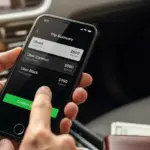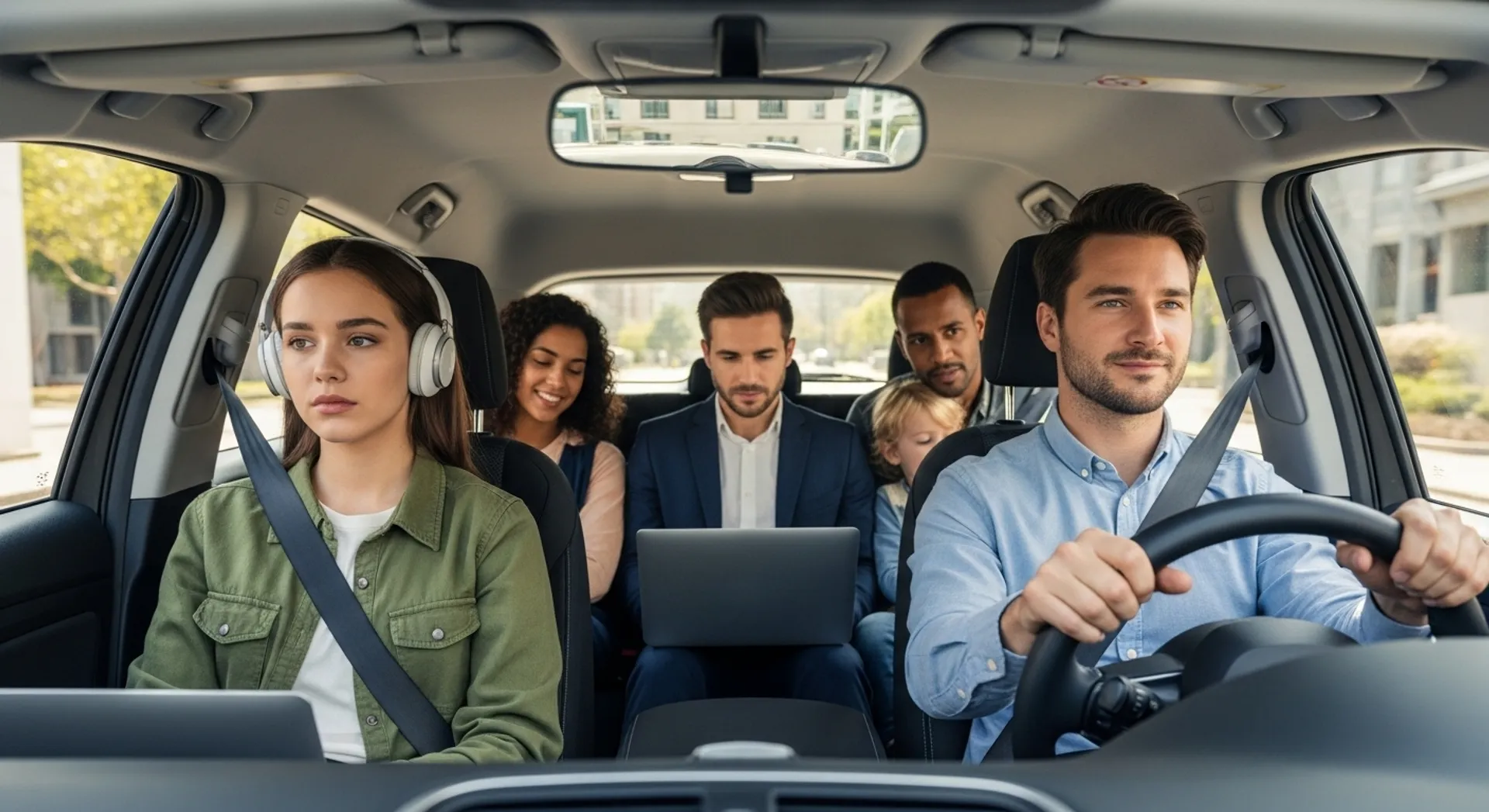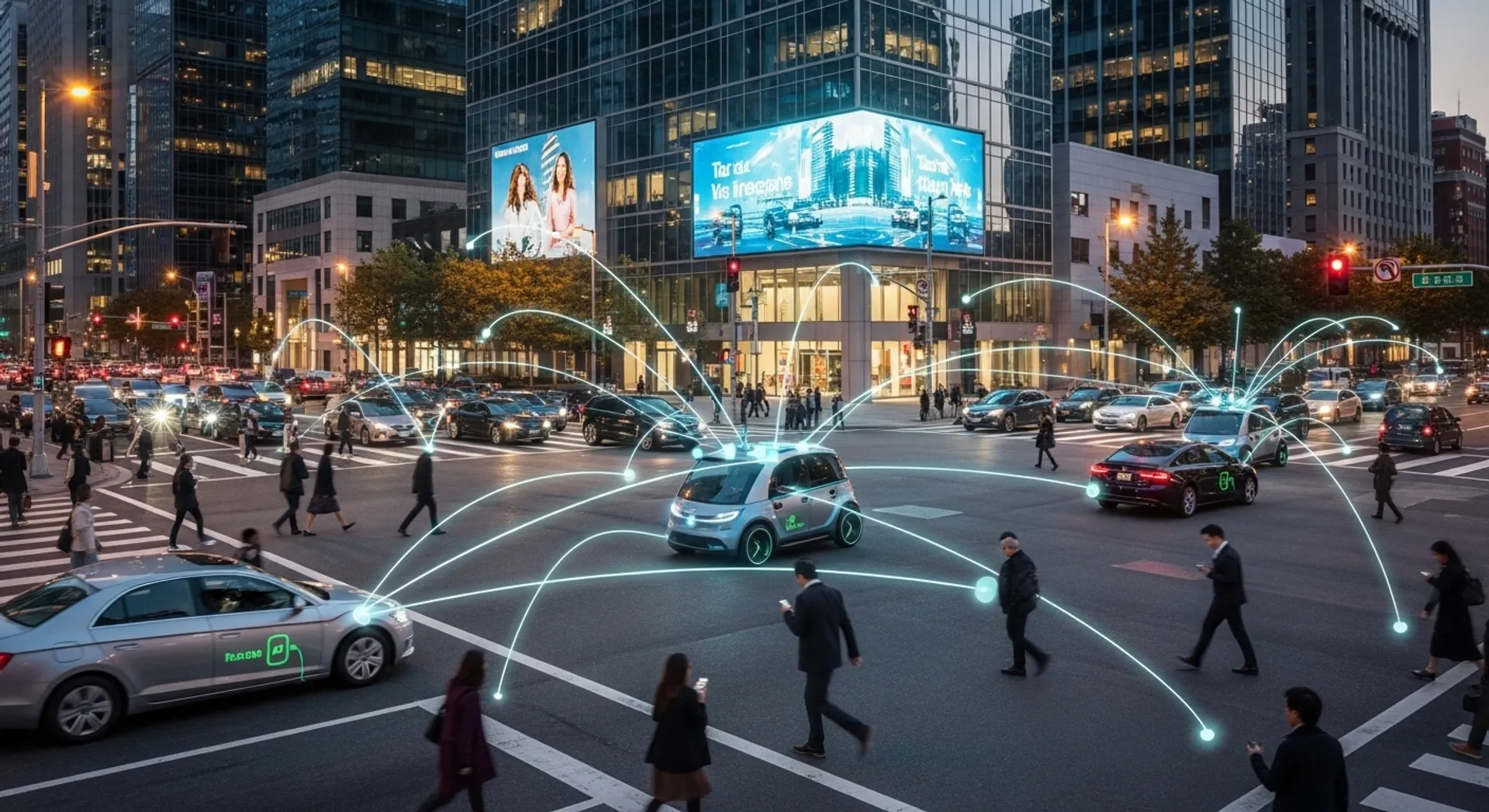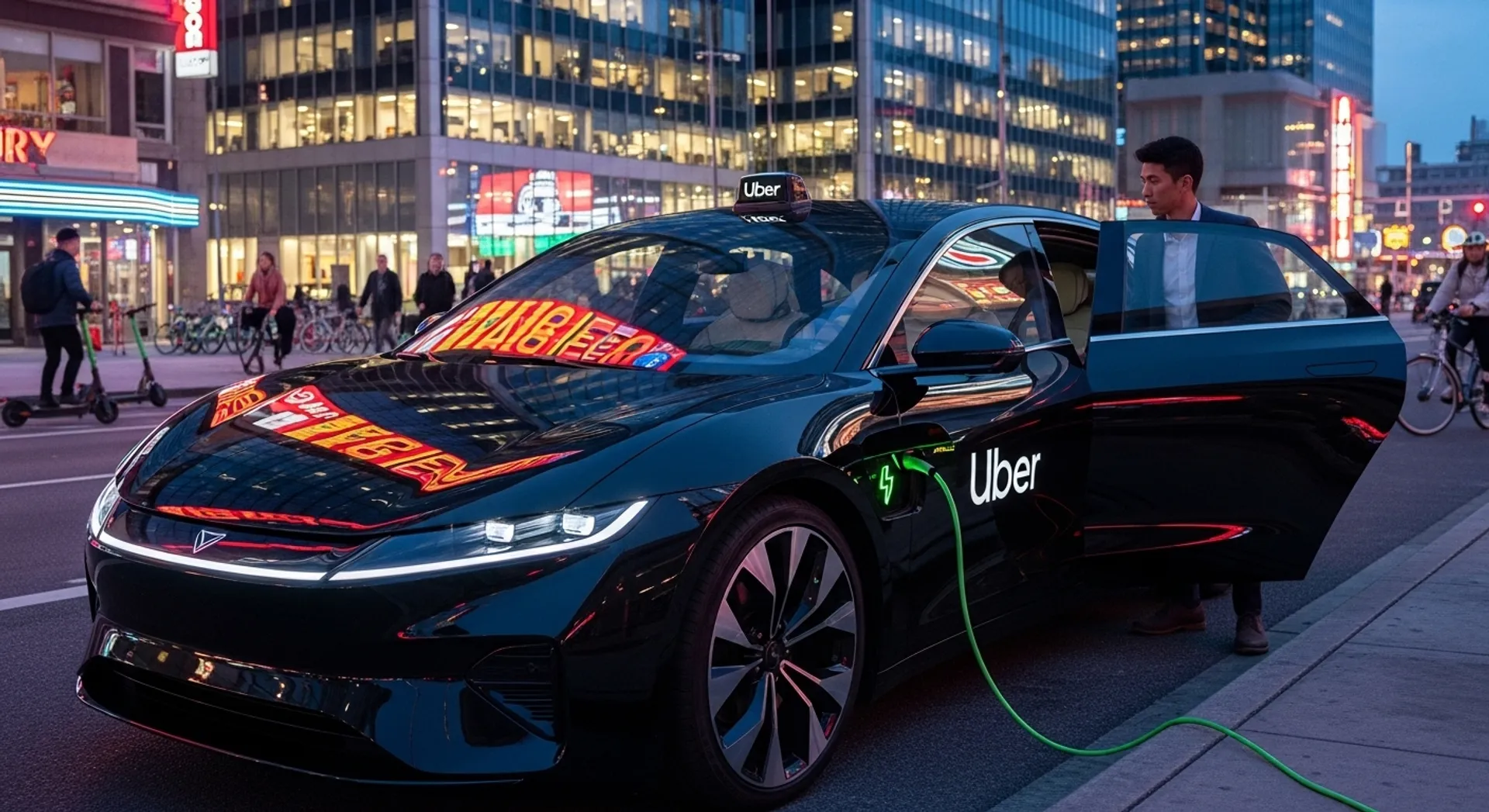It was a cold, snowy evening in Paris in 2008. Two entrepreneurs, Travis Kalanick and Garrett Camp, found themselves stranded on the street, unable to hail a taxi. As minutes turned into frustrating hours, a simple question emerged: why couldn’t getting a ride be as easy as pressing a button? That moment of frustration became the spark for a technological revolution that would fundamentally transform how billions of people move through their cities every single day.
Today, the phrase “I’ll just Uber there” has become as commonplace as “Google it” — a testament to how deeply this technology has woven itself into the fabric of modern life. What started as an app to summon fancy town cars in San Francisco has evolved into a global platform operating in over 10,000 cities across 70 countries, facilitating approximately 28 million trips daily. But beyond the impressive numbers lies a more profound story: how mobile app technology didn’t just create a new business — it fundamentally changed human behavior, urban planning, employment patterns, and our relationship with transportation itself.
The Birth of On-Demand Transportation
Before Uber launched in 2010, transportation followed predictable but often frustrating patterns. If you needed to get somewhere, your options were limited: drive your own car, take unreliable public transportation, or hope to find a taxi. In many cities, hailing a cab meant standing on street corners with your arm raised, competing with others for the attention of passing drivers who might or might not stop. You had no idea when — or if — a taxi would arrive, how much the fare would cost until the ride ended, or whether the driver would accept credit cards.
The traditional taxi system operated on opacity and inconvenience. Pricing remained mysterious, payment methods were inconsistent, and accountability was virtually nonexistent. If you had a poor experience, there was little recourse beyond perhaps filing a complaint with a taxi commission that might never follow up. For people with disabilities, those living outside city centers, or anyone needing transportation during off-peak hours, reliable rides often felt impossible.
Uber’s app technology shattered these limitations. With just a few taps on a smartphone, users could request a ride, see exactly how far away their driver was, track the vehicle’s approach in real-time, know the fare estimate upfront, and pay automatically without fumbling for cash or credit cards. The driver’s name, photo, vehicle details, and rating were all visible before the ride even began. This transparency transformed not just convenience but also safety and accountability.![]()
The Power of Real-Time Information
What made this possible was the convergence of several technologies: widespread smartphone adoption, GPS location services, mobile internet connectivity, and cloud computing infrastructure. The Uber app leverages GPS tracking to pinpoint both rider and driver locations with remarkable accuracy. When you open the app, sophisticated algorithms calculate which nearby drivers can reach you fastest, factoring in real-time traffic conditions, driver availability, and optimal routing.
This real-time information revolutionized the waiting experience. Instead of standing uncertainly on a corner wondering if a taxi would ever appear, riders could watch their driver’s progress on a map, receiving accurate estimated arrival times that updated dynamically. This simple feature — seeing the car approaching — eliminated anxiety and uncertainty, fundamentally changing how people experienced urban transportation.
Cashless Convenience: Transforming Payment Systems
One of Uber’s most transformative innovations was eliminating cash from the transportation equation. The app stores payment information securely, automatically charging riders at the end of trips. This cashless system addressed multiple pain points simultaneously: no more awkward fumbling for correct change, no concerns about carrying cash in unfamiliar neighborhoods, no disputes over fare amounts, and no vulnerability to the common taxi scam of “broken” credit card machines.
For many users, this represented their first experience with seamless mobile payments. The technology worked so intuitively that it raised expectations for other services. If Uber could handle payments invisibly in the background, why couldn’t restaurants, retail stores, and other businesses? This helped accelerate the broader adoption of mobile payment systems and digital wallets across countless industries.
The payment innovation extended beyond convenience to economic inclusion. In many developing markets, Uber provided access to digital payment systems for people who might not have traditional banking relationships. The app accepts various payment methods including credit cards, debit cards, digital wallets like Apple Pay and Google Pay, and even cash in some markets, meeting users where they are while gradually introducing them to cashless transactions.
Creating Economic Opportunities: The Gig Economy Revolution
While Uber transformed life for riders, it simultaneously created unprecedented economic opportunities for drivers. The app technology enabled anyone with a qualifying vehicle to become a transportation provider, earning income on their own schedule. This flexibility proved particularly valuable for people seeking supplemental income, retirees, students, and those caring for family members who needed flexible work arrangements.
The platform model meant drivers didn’t need to invest in expensive taxi medallions, navigate complex licensing beyond basic requirements, or commit to fixed shifts. They could turn on the app during hours that suited their schedule and turn it off when unavailable. This flexibility has enabled millions of people worldwide to generate income that might not have been accessible through traditional employment models.
However, this revolution hasn’t been without controversy. The classification of drivers as independent contractors rather than employees has sparked intense debate about worker rights, benefits, and protections. California’s Proposition 22, passed in 2020, represented a landmark moment in this ongoing conversation, granting rideshare drivers certain rights including minimum hourly wages, healthcare stipends, and occupational insurance while maintaining their independent contractor status. This precedent has influenced discussions about gig economy worker protections globally.
Impact on Personal Economics
For many users, Uber’s technology has fundamentally altered the economics of transportation. The ability to request rides on-demand has made car ownership less necessary, particularly in urban areas. Research indicates that some Uber users have delayed purchasing vehicles or sold cars they already owned, recognizing that on-demand transportation could meet their needs more economically than the combined costs of car payments, insurance, maintenance, parking, and fuel.
This shift has particular implications for younger generations who already show less interest in car ownership than previous generations. The convenience and cost-effectiveness of app-based transportation reinforce this trend, contributing to changing attitudes about mobility and consumption more broadly.
Urban Accessibility: Reaching Underserved Communities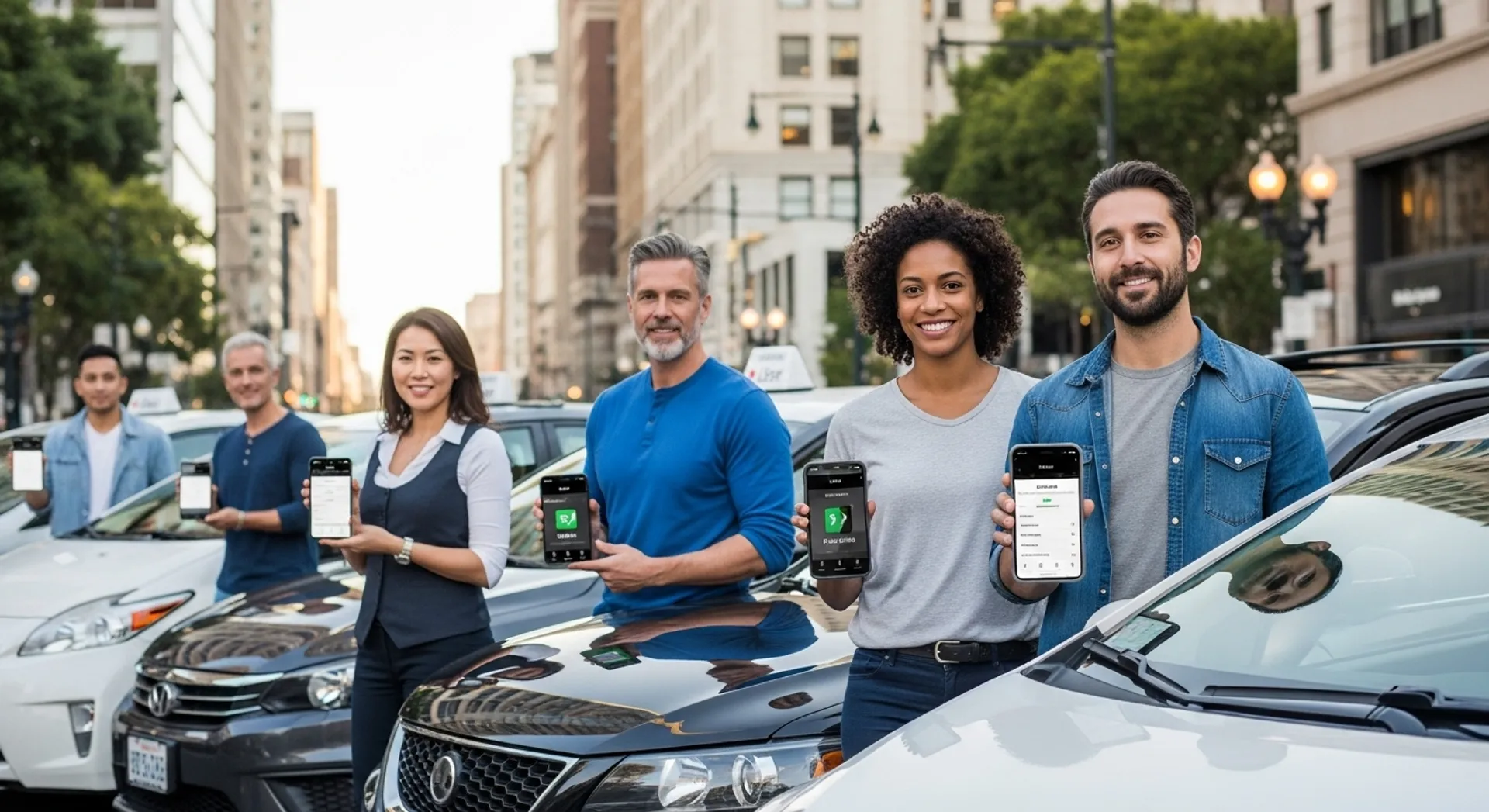
One of Uber’s most significant impacts on daily life relates to accessibility — both geographic and demographic. Traditional taxi services concentrated in downtown areas and affluent neighborhoods where demand was highest and fares most profitable. Suburban areas, rural communities, and lower-income neighborhoods often had minimal taxi service, creating transportation deserts that limited residents’ access to jobs, healthcare, education, and social opportunities.
Uber’s platform economics changed this calculation. Because the app matches any available driver with any requesting rider, service naturally expanded to areas previously underserved by traditional taxis. Drivers living in suburban or rural areas could serve their own communities, and riders in these locations gained access to reliable transportation for the first time. This geographic democratization of transportation access has profound implications for economic mobility and quality of life.
For people with disabilities, Uber’s technology has created new possibilities while also highlighting ongoing challenges. The ability to request rides through an app rather than phone calls benefits deaf and hard-of-hearing users. The upfront pricing and cashless payments assist those with cognitive disabilities. However, the platform has also faced criticism regarding accessibility for wheelchair users and the need for specialized vehicles, leading to investments in accessible transportation options and partnerships with disability advocacy organizations.
Safety Through Technology and Accountability
A decade ago, the idea of getting into a stranger’s car would have seemed dangerously naive. Uber’s technology fundamentally changed this calculation through multiple layers of accountability and safety features. The two-way rating system — where both riders and drivers rate each other — creates powerful incentives for good behavior on both sides. Drivers know that poor ratings can result in deactivation from the platform, while riders understand that their own ratings affect drivers’ willingness to accept their requests.
The app maintains comprehensive records of every trip: who drove, who rode, what route they took, and how long it took. GPS tracking means rides are monitored in real-time, creating a digital trail that enhances accountability. In emergencies, the app provides features to share trip details with friends or family, contact emergency services, and report safety concerns directly to Uber’s safety team.
These technological safeguards have enabled what sociologists call the “sharing economy” — a willingness to share resources with strangers that extends beyond transportation to home-sharing, car-sharing, and numerous other services. While no system is perfect and safety concerns persist, the technology-enabled accountability mechanisms have largely succeeded in creating trust where it previously didn’t exist.
Real-Time Ride Sharing Features
Uber’s technology enables riders to share their trip progress with trusted contacts in real-time. With a simple share function, friends or family can track exactly where you are, your route, and your estimated arrival time. This feature has proven particularly valuable for people traveling in unfamiliar cities, at night, or in situations where an extra layer of security provides peace of mind.
Reducing Drunk Driving and Improving Public Health
One of Uber’s most significant but often understated impacts on daily life relates to public health and safety. Multiple studies have examined the relationship between rideshare availability and drunk driving incidents, with many finding correlations between Uber’s presence and reductions in alcohol-related accidents and DUI arrests.
Before convenient rideshare apps, people faced a difficult choice after drinking: drive impaired, find a designated driver, use expensive taxi services that might not be available, or limit their activities. Uber’s app made the safe choice also the easy choice. With rides available 24/7, transparent pricing, and no need for cash, the barriers to choosing a safe ride home dropped dramatically.
Research indicates that in some cities, the introduction of rideshare services correlated with measurable decreases in traffic fatalities and DUI incidents. While multiple factors influence these trends, the availability of convenient, affordable alternatives to impaired driving appears to have saved lives. This public health benefit extends beyond the individual users to everyone sharing the roads.
Environmental Impacts: A Complex Picture
Uber’s impact on the environment presents a nuanced picture. On one hand, the company has committed to becoming a zero-emission platform by 2040, with interim goals of 35-45% reduction in carbon intensity by 2025 and 80-100% by 2030. The introduction of Uber Green, offering 100% electric vehicle rides, supports this commitment. In London, Uber has invested significantly in helping drivers transition to electric vehicles, aiming for a fully electric fleet in the capital.
The potential for ridesharing to reduce car ownership aligns with sustainability goals. Research suggests that the number of vehicles on the road could potentially be reduced by up to 76% through efficient ridesharing without affecting travel times. Fewer personally owned vehicles means less manufacturing, less parking infrastructure, and potentially more efficient use of urban space.
However, studies have also found that in major cities, services like Uber and Lyft have increased Vehicle Miles Traveled (VMT) by significant percentages compared to traditional taxis. Some of this increase comes from “deadheading” — drivers circulating without passengers, waiting for requests. Additionally, some trips that might have been taken via public transit, walking, or biking are instead taken in rideshare vehicles, potentially increasing overall emissions.
Integration with Public Transportation
Rather than simply competing with public transportation, Uber’s technology has increasingly integrated with it, solving the “first mile, last mile” problem that often makes public transit impractical. Many urban trips involve destinations not directly served by bus or train routes, requiring inconvenient transfers or long walks. Uber’s app now includes public transportation information in many cities, showing users how to combine rideshare and transit for optimal routing.
This integration benefits both systems. Public transit gains increased accessibility, while Uber helps reduce congestion in city centers by facilitating connections to transit hubs rather than downtown destinations. The technology enables multimodal journeys — perhaps taking Uber to a train station, riding the train, then taking another Uber to the final destination — all planned and paid for through a single app interface.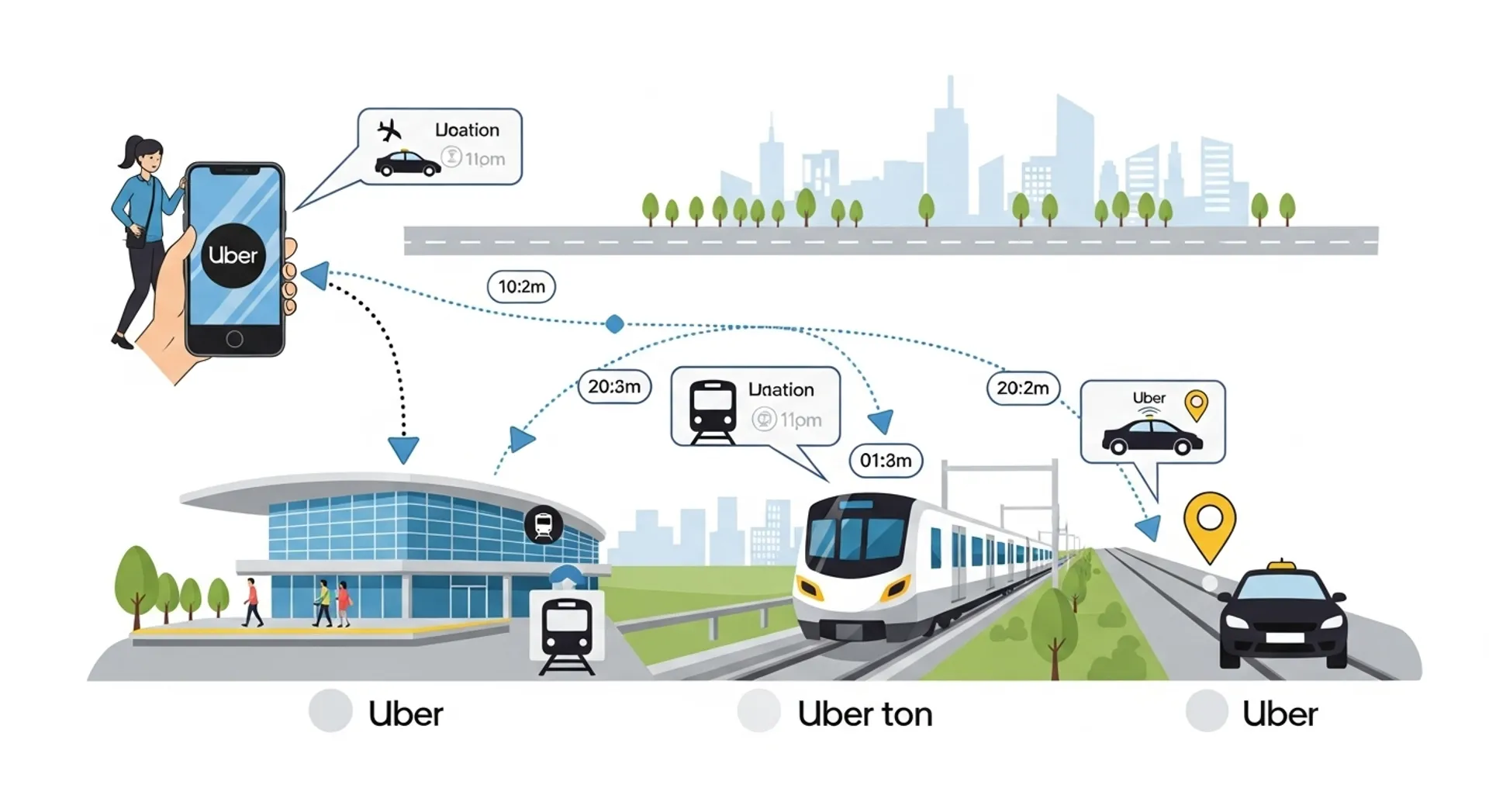
Changing Social Behaviors and Expectations
Perhaps Uber’s most profound impact on daily life isn’t technological but behavioral. The app trained hundreds of millions of people to expect instant gratification, real-time information, and frictionless transactions. These expectations now extend far beyond transportation to food delivery, package delivery, home services, and countless other on-demand offerings.
The phrase “Uber for X” became a common way to describe startups applying similar models to different industries. We’ve seen “Uber for dog walking,” “Uber for house cleaning,” “Uber for healthcare,” and endless variations. While many of these ventures have failed, the underlying insight remains valid: technology can connect supply and demand more efficiently while providing transparency, accountability, and convenience.
Social interactions have also evolved. The etiquette of ridesharing — whether to sit in front or back, whether to make conversation or remain silent, how to rate drivers — represents new social norms that didn’t exist before. These seemingly small behavioral changes reflect how technology reshapes not just what we do but how we relate to each other and navigate social spaces.
Lessons for Daily Life in the Digital Age
Uber’s technology offers broader lessons about innovation and daily life in the digital age. The company succeeded not by inventing fundamentally new technology but by combining existing technologies — smartphones, GPS, mobile payments, cloud computing — in ways that solved real human problems. The insight wasn’t that people needed better taxis; it was that people needed reliable, convenient, affordable transportation, and technology could deliver it differently than the existing taxi system.
This approach — understanding human needs and using technology to address them in novel ways — has applications far beyond transportation. The app’s success demonstrates that major improvements in daily life often come not from breakthrough inventions but from thoughtful application of existing technologies to create seamless, user-friendly experiences.
The story also illustrates technology’s double-edged nature. The same platform that provides convenience and opportunity also raises questions about labor rights, environmental impacts, urban planning, and corporate power. As Uber’s technology continues evolving — potentially incorporating autonomous vehicles, drones, and other emerging technologies — society will need to thoughtfully navigate the balance between innovation’s benefits and its challenges.
The Ongoing Transformation
More than 15 years after that frustrating night in Paris, Uber’s app technology continues transforming daily life in ways both obvious and subtle. For millions of people, it has made transportation more accessible, more convenient, and more reliable. It has created economic opportunities while also raising important questions about the future of work. It has changed how we think about ownership, sharing, and trust with strangers.
The technology that seemed revolutionary in 2010 now feels almost ordinary — a testament to how quickly humans adapt to innovation that genuinely improves their lives. Yet this normalization shouldn’t obscure the profound changes Uber’s app has catalyzed. From the way cities plan transportation infrastructure to how individuals make decisions about car ownership, from new possibilities for economic participation to new expectations about service delivery, the ripples continue spreading through daily life.
As we look toward the future, the question isn’t whether technology will continue changing how we live but how thoughtfully we’ll shape that change to maximize benefits while addressing challenges. Uber’s story — born from frustration with inadequate transportation and transformed into a platform touching billions of lives — reminds us that sometimes the most powerful innovations come from asking simple questions about improving everyday experiences and having the vision and technology to turn those questions into reality.

